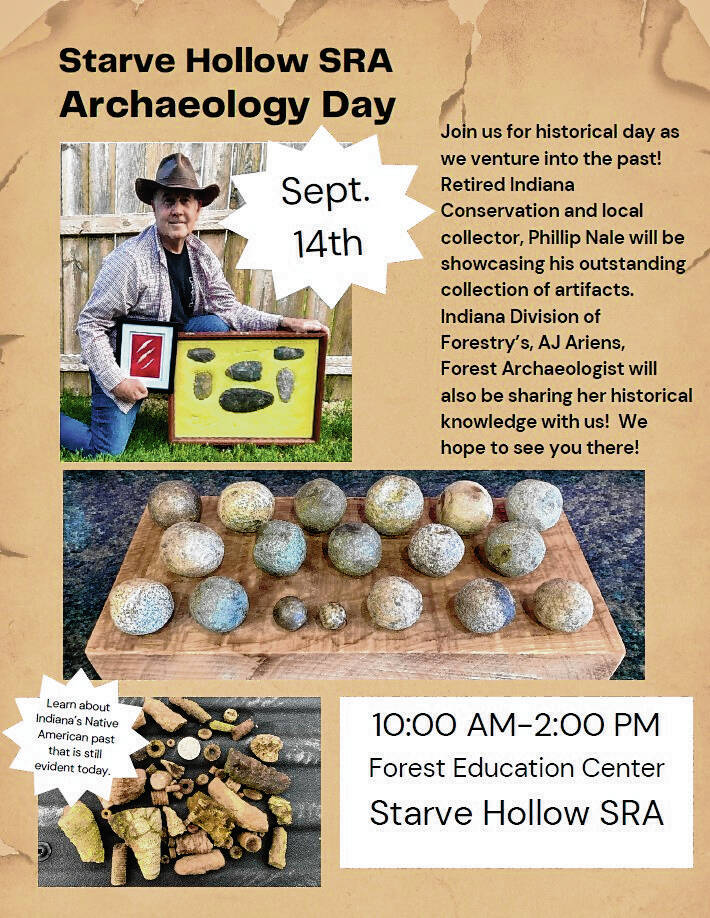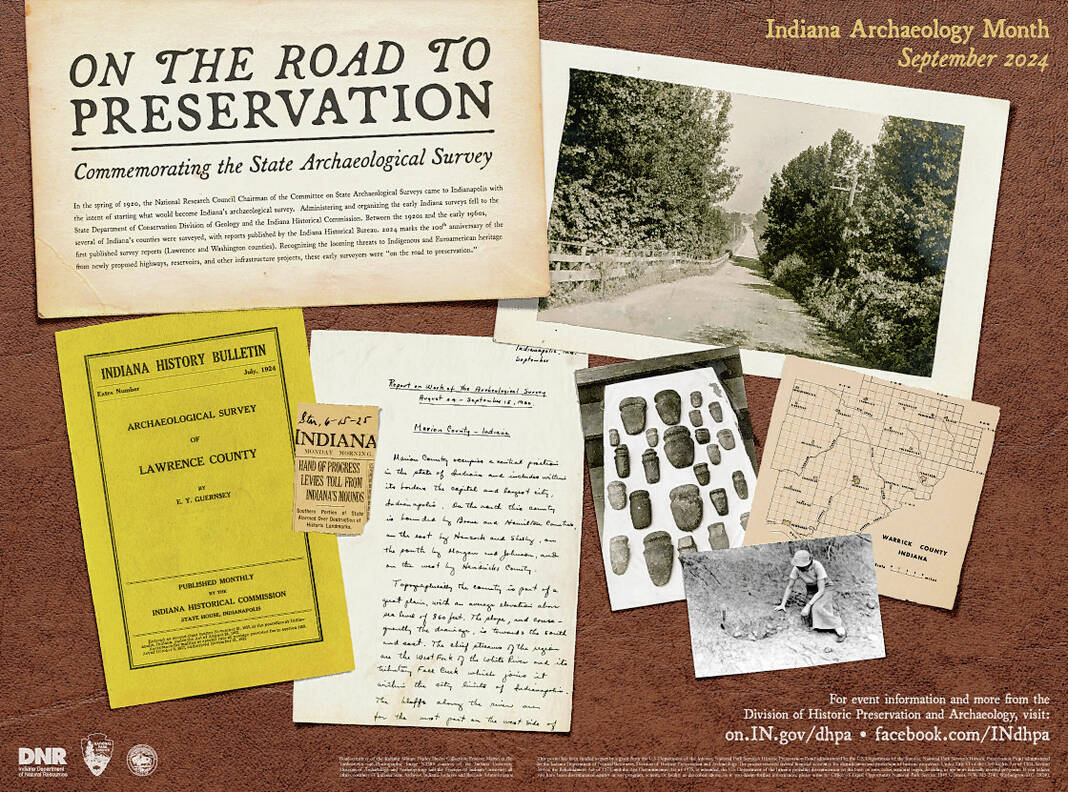
Starve Hollow Archaeology Day.

Archaeology Month poster.
Throughout September, Hoosier history buffs can meet archaeologists and learn about the state’s past. Through the prior years’ celebrations, thousands of people been able to experience archaeology. September marks 29 years celebrating statewide by the Indiana Department of Natural Resources.
Starve Hollow State Recreation Area will be hosting their Archaeology Day from 10 a.m. to 2 p.m. Sept. 14 at the Forest Education Center, 4345 S. County Road 275W, Vallonia.
During the event, conservation and local collector Phillip Nale from Brownstown will have his artifacts on display. Another guest speaker will be A.J. Ariens, a forest archaeologist from the Indiana Division of Forestry.
A variety of events for all ages will be offered by universities, museums, organizations and individuals throughout Indiana, coordinated by the Indiana Department of Natural Resources (DNR) Division of Historic Preservation & Archaeology (DHPA).
“Archaeology tells us about the past and Archaeology Month provides a perfect way for Hoosiers to learn about the science,” said Dan Bortner, who is the DNR director and state historic preservation officer.
This year’s commemorative poster focuses on the State Archaeological Survey. In the spring of 1920, the National Research Council chairman of the Committee on State Archaeological Surveys traveled to Indianapolis with the intent of starting the systematic survey of all Indiana counties.
Previously, recording Indiana’s archaeological sites had occurred sporadically. Administration of the statewide survey fell to the State Department of Conservation, now known as the DNR, which then had a Division of Geology and the Indiana Historical Commission.
In that more methodical era, between the 1920s and the early 1960s, more than 20 of Indiana’s counties were systematically surveyed, and the reports were published by the Indiana Historical Bureau.
“Recognizing the looming threats to Indigenous and Euroamerican heritage from newly proposed highways, reservoirs and other infrastructure projects, these early surveyors were on the road to preservation,” said Amy Johnson, whos is the DHPA’s state archaeologist. “We are proud that the DNR was there at the beginning of the State Archaeological Survey and that today, the DHPA continues to lead the statewide efforts for protecting and preserving Indiana’s heritage.”
This year marks the 100th anniversary of the first published survey reports, which covered Lawrence and Washington counties.
Overall, archaeologists have recorded more than 75,000 sites in Indiana since the early 1800s, helping shape public understanding of the people who have called the land we now call Indiana home.
